Around the time you get this Vine in your hands, I’ll be in my yard digging a new trench for more daffodils. I’m a little obsessed, but when spring (if you can even call it that on the Vineyard) arrives, I’ll be so thankful for the color. Last year I planted a total of 125 bulbs from eight different varieties, and they bloomed over a period of seven weeks. I was in heaven. And the flower vase on my breakfast room table was never empty.
I used to think of daffodils as landscape stalwarts; picking a few here and there was a nice bonus, but their main purpose was to line the driveway or fill the understory beneath a stand of trees in their cheery and reliable way.
My outlook changed two winters ago when I took an online flower farming course from Floret Flowers. One of the main strategies farmer Erin Benzakein stresses for those who want to make a business of selling flowers is to extend the growing season as much as possible – earlier in spring, and later in fall. Home growers who love cut flowers can benefit from this approach as well. And here on the Island, spring is an especially needy season. Colorful fresh flowers can really lend a boost to an otherwise stark season.
While home growers may not have a hoop house or greenhouse to start flowers such as ranunculus or anemones in late winter, we can easily plant spring-blooming bulbs outside in the fall. And though I’m crazy for tulips – I grow some inside my fenced vegetable garden – the deer love them too. So that leaves daffodils as our best Island bet. We shouldn’t look at them as a consolation prize, though. The gorgeous varieties available now are popular with farmers, florists and flower geeks alike for many reasons.
Consider Color, Shape, Fragrance and Bloom Time
One of the nicest things about daffodils is that there are early, mid- and late-season varieties. So if you purchase and plant varieties from each group, you can have blooms for six to eight weeks, starting in March. If you have a cool, sunny indoor spot, you can even plant some varieties in pots and force them to bloom before they would outdoors, extending your bloom time even more.
There are literally thousands of daffodil cultivars in the narcissus family. Take a look at online sources like colorblends.com and dutchgrown.com, and you will be amazed at the variety. And, ahem, only some of them are yellow! Colorwise, there are infinite combinations of white, cream, lemon, peach, egg-yolk and tangerine. The color changeups occur in the tepals (the petals), which are often one color, and in the coronas (the cup- or trumpet-shaped center), which are often another color (or colors).
Sizes and shapes vary too. Some daffodils are “doubles,” which means they have extra tepals, sometimes overlapping in a whorl, making them look fluffy and almost rose-like. They are gorgeous. The classic large trumpet daffodils – such as the yellow Carlton and the white Mount Hood – have long, narrow coronas, while other daffodils, such as the fragrant heirloom daffodil Poeticus Actaea (also known as pheasant eye), have a delicate, short cup and an open face.
And not all daffodils feature one blossom on one stem. Some produce clusters of two or more small blooms on a stem. One of my favorites, Avalanche, has eight to 12 petite flowers on each stem. It is simply adorable. Sir Winston Churchill is a popular and elegant double-flowered daffodil that has a cluster of small blooms on each stem – and a heady fragrance. Interestingly, the doubles are often fragrant. But not all daffodils are fragrant, so read descriptions carefully when making your choices. You’ll want to have at least a couple scented ones in your mix. Double check that your choice of scented daffodil is hardy in New England; some are better suited to Southern climates.
Dig a Trench Instead of Holes
Traditionally, gardeners spend an entire fall day (or at least a few hours) with a trowel or a bulb planter digging holes in the grass or under trees to plant daffodils. This is the best option for landscaping with daffodils that you want to look natural – and to naturalize (spread) over the years.
But if you’d like to have an ongoing supply of daffodils for cut flowers, consider using an entire flower bed – one that already exists in your yard or one that you create by digging a wide, shallow trench. You’ll arrange the bulbs in the trench in rows quite snuggly (close but not touching) and cover with decent soil and a layer of mulch. When we planted our 125 daffodils last year, we chose a bed behind our deck that we had initially created to plant shade perennials. I grouped each daffodil variety into a section of rows. I also spaced five empty pots, each six or seven feet apart, in the bed. They were placeholders for five astilbes I eventually bought in the spring.
A dedicated bed for daffodils has a few advantages. First, it’s an efficient use of space. Secondly, if you’re planting a large number of bulbs, it’s easier to dig a shallow trench than to carve out hundreds of holes.
And lastly, the bed makes dealing with the post-bloom foliage easier. After removing any remaining spent blossoms at the end of the bloom period, you’ll need to leave the green foliage alone until it browns and withers completely. (Don’t fold the foliage over and tie it up as some recommend, and most definitely do not cut it off – unless you don’t want the daffodils to rebloom next year!)
It can take weeks for the foliage to expire while it is directing energy down to the bulb for next year’s growth. In the short term it can look rather pretty, but as it decays the browning foliage can be annoying to look at, especially if your daffodils are scattered around the house or in a prominent location. But if you’ve got them in a dedicated bed, it’s easier to think of them more like a row in your vegetable garden – and resist tidying up prematurely. (In fact, creating a bed of daffodils right outside your fenced vegetable or cut-flower garden is a good option.) If the bed must be in a frequently viewed location, interplant with a few distracting perennials as I did with my five tall astilbes, which leaf out and bloom just as the daffodils are senescing.
Cut Flowers for Days
Topping off the list of great things about daffodils: they’re easy to grow and their sturdy stems are custom-made for hanging out in a vase. If you plant the bulbs at the right depth (about 6 inches) in mid- to late-fall (they need a winter chill), the foliage will emerge in late winter, the blooms will arrive a few weeks later and you'll have your first cut flowers of the season.
To harvest daffodils, bring a bucket of cool water and some snips to the garden. Choose stems with buds that are not fully open for the longest vase life. Make a sharp cut on the diagonal and drop each stem in the bucket, making sure the bottoms of the stems are submerged. Keep the bucket in a cool, dark place for several hours or overnight. Then arrange in vases.
One important note: daffodils have a sappy substance in their stems which is released in water. Other flowers (including tulips) do not like this sap! (It also can irritate skin; wash hands after handling.) However, after an overnight rest and a fresh change of water, daffodils can successfully mix with other flowers. Pair them with hellebores, forced forsythia and azalea branches, pussy willows, and tulips. (Note: all parts of the daffodil are toxic; keep away from kids and pets!)
Like all cut flowers, daffodils are happiest in a cool spot in the house; the warmer the temperature the faster they will open, but also the shorter the vase life will be. Keep them out of direct sunlight and they will be happy for five to seven days.
Susie Middleton is editor of The Vine.
In addition to online sources, our local Island nurseries all sell a nice assortment of daffodils and other bulbs.

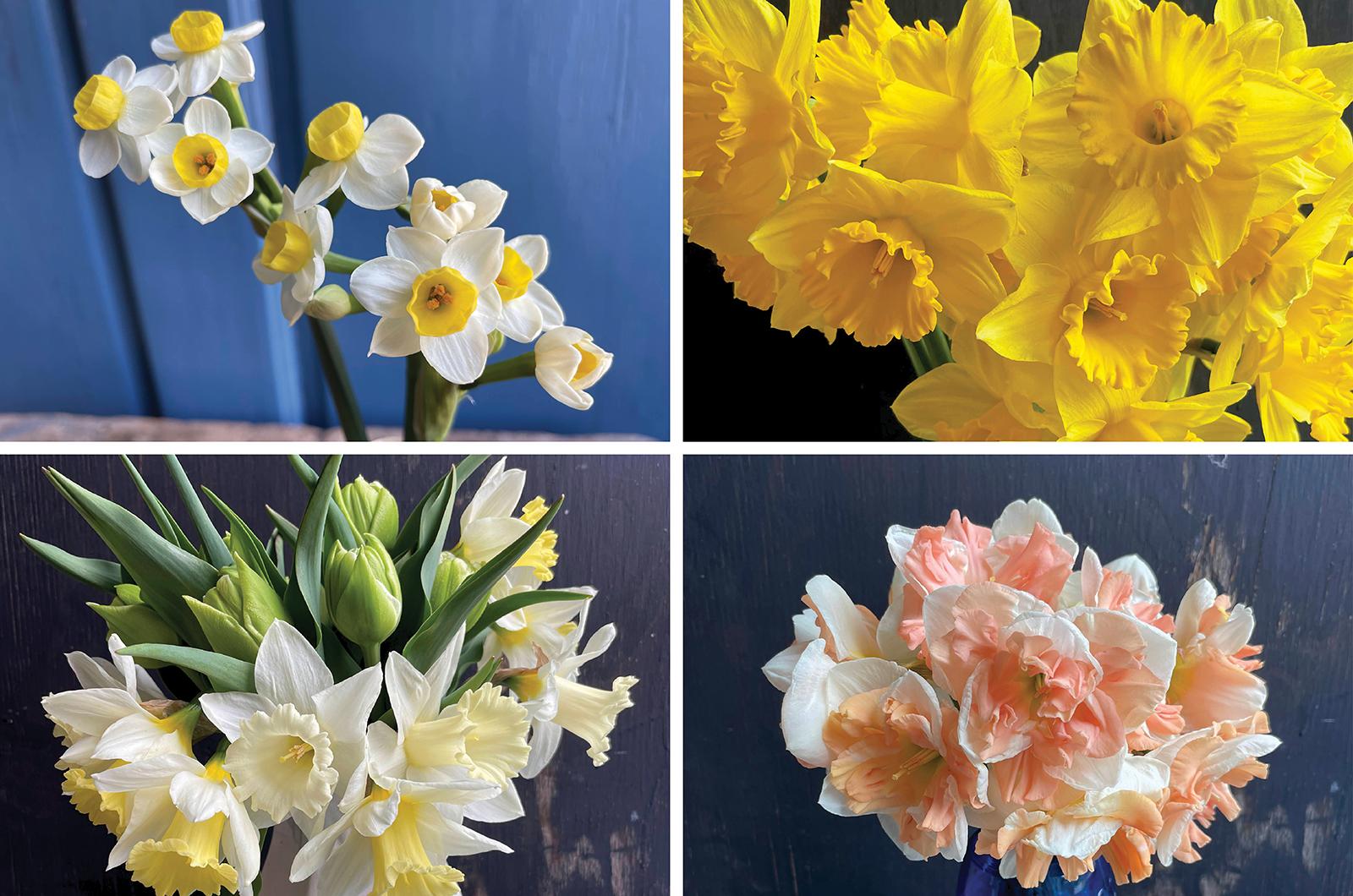



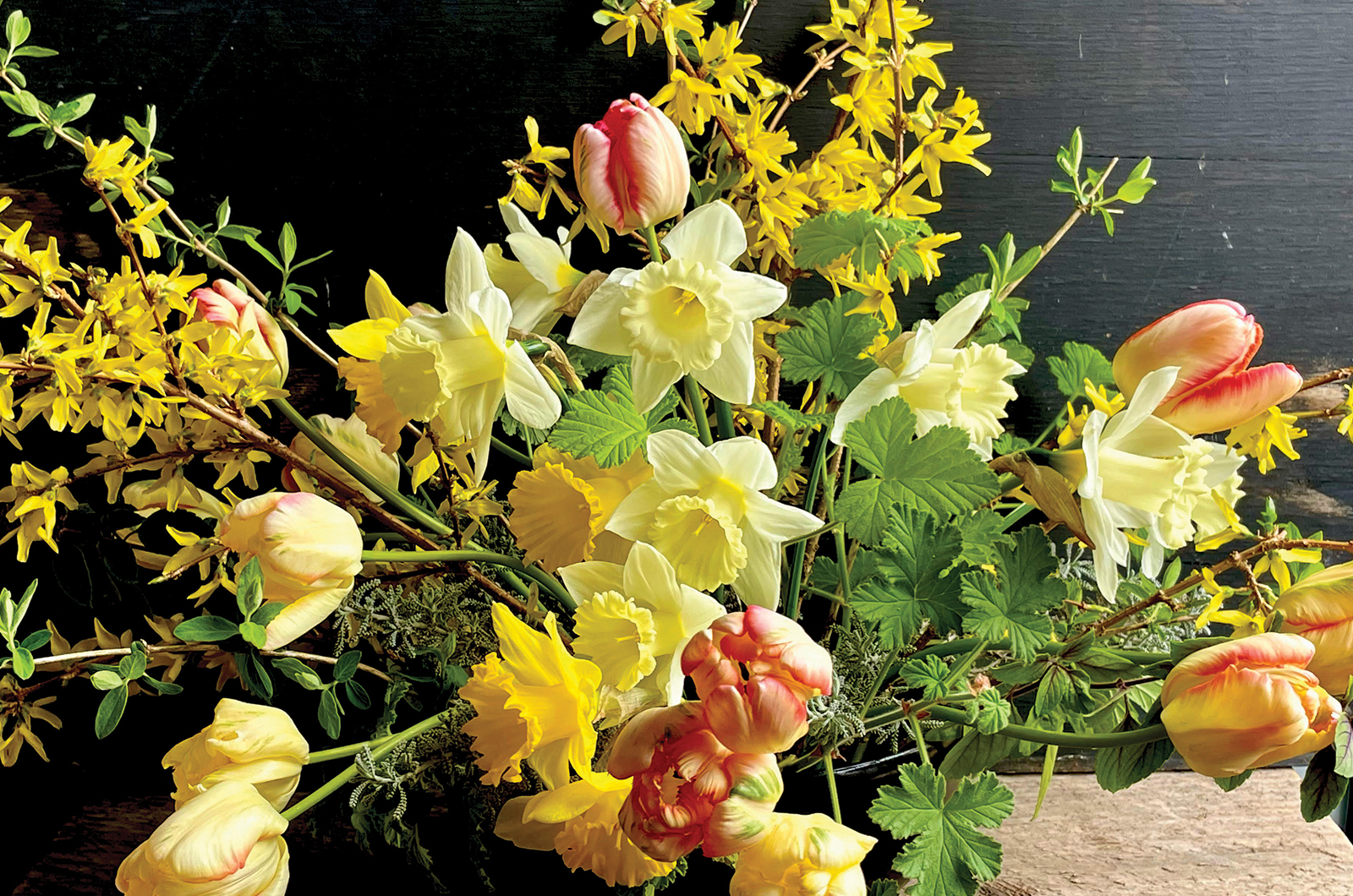

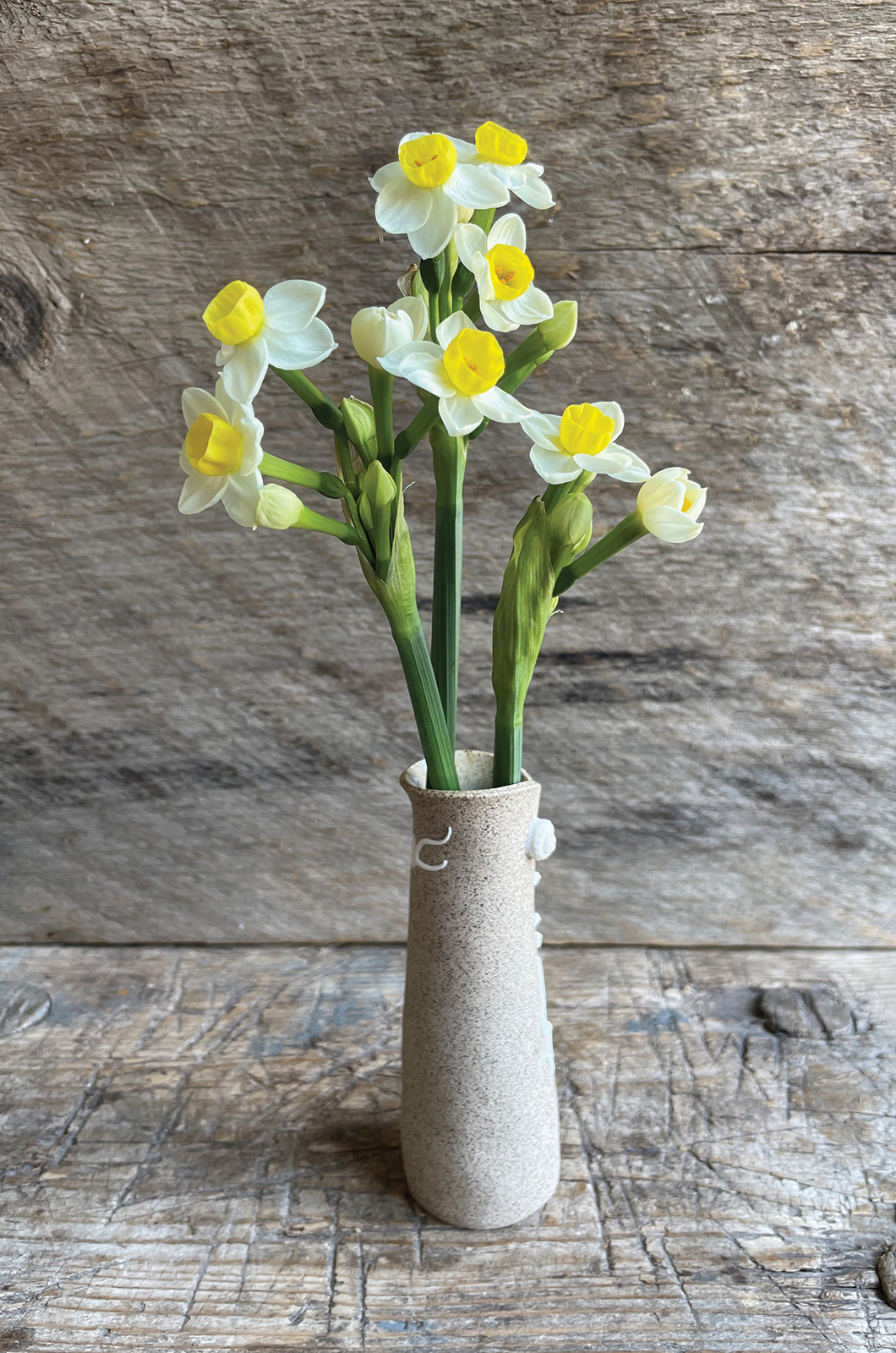
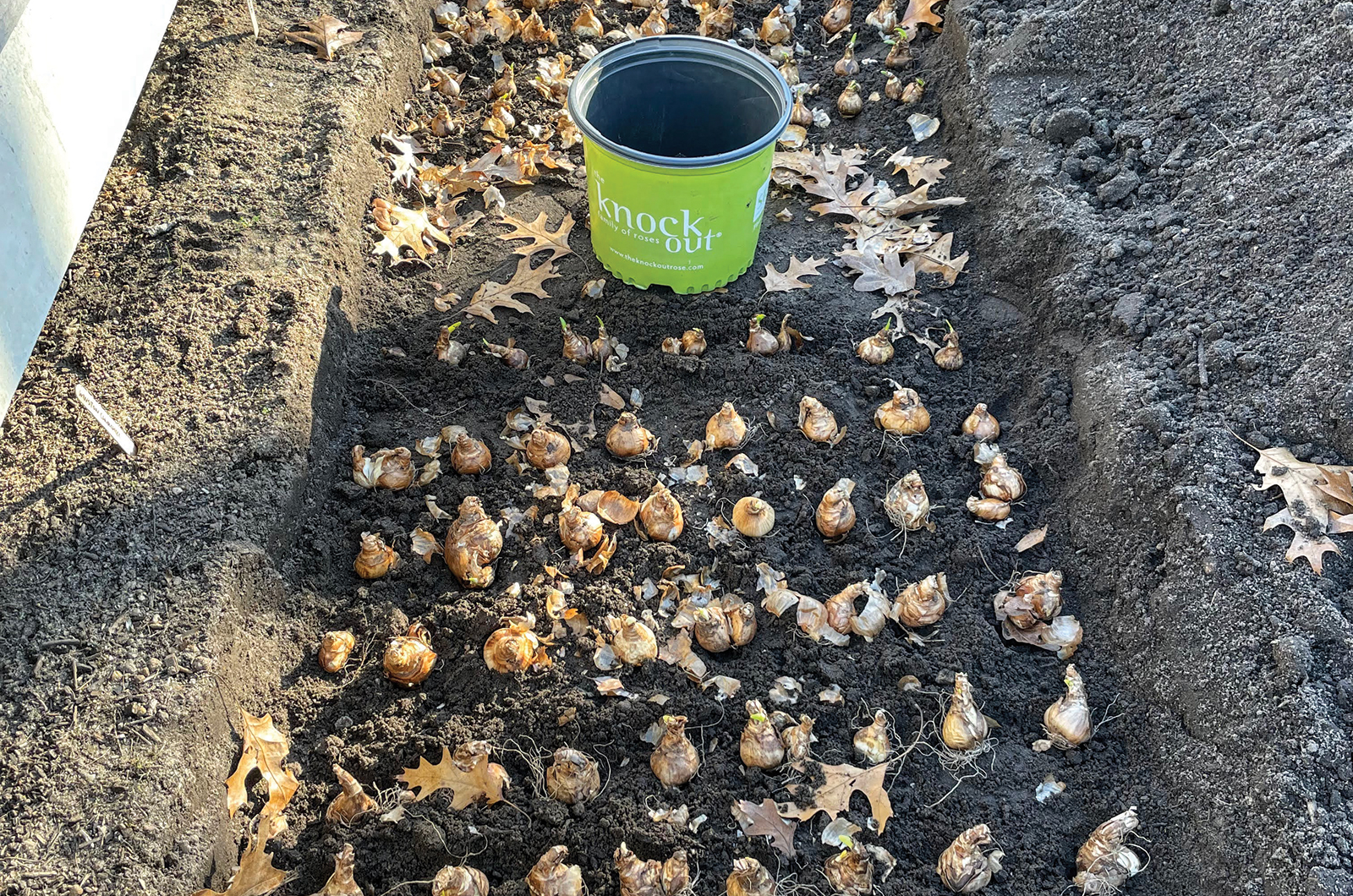
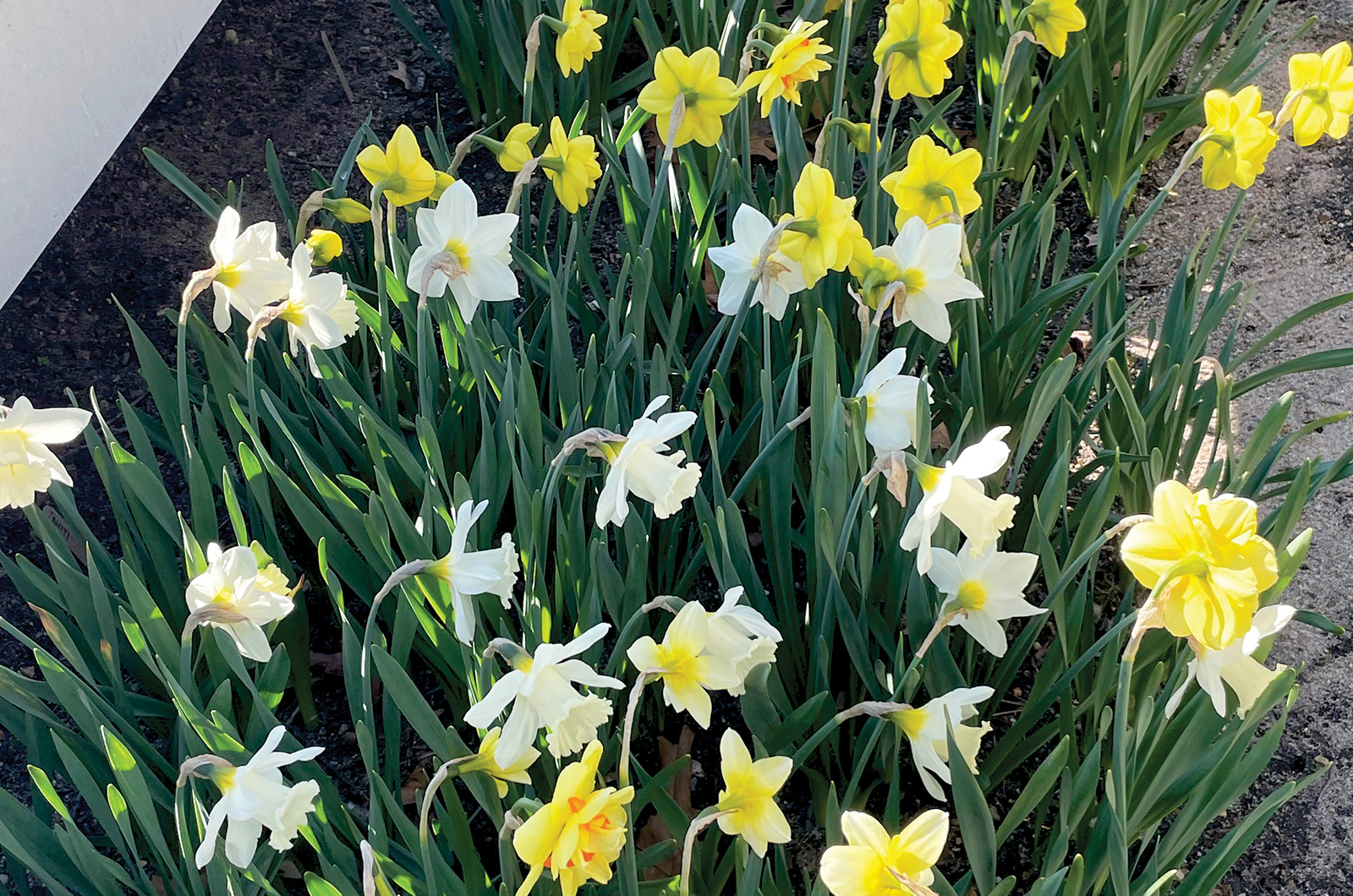
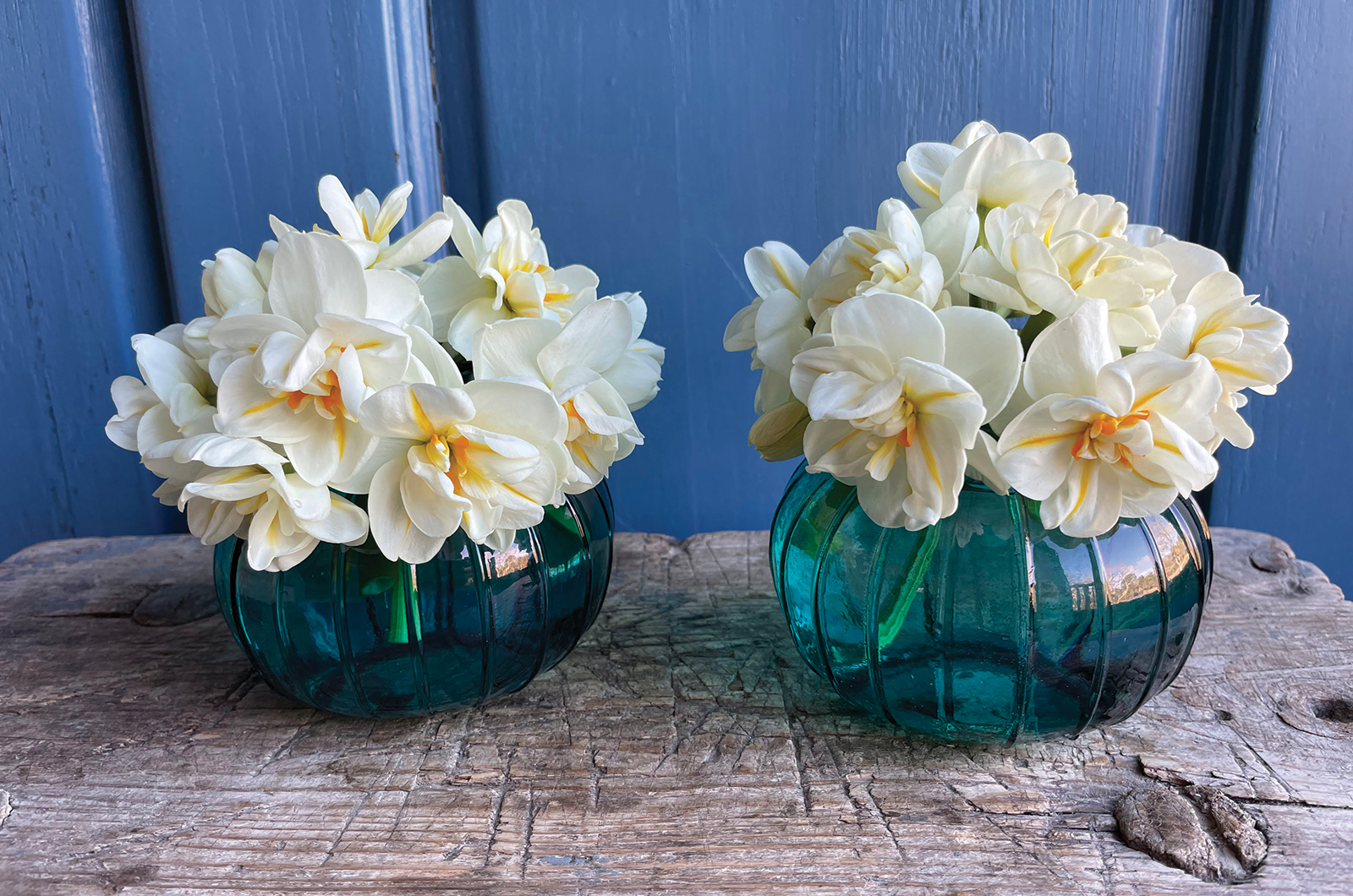
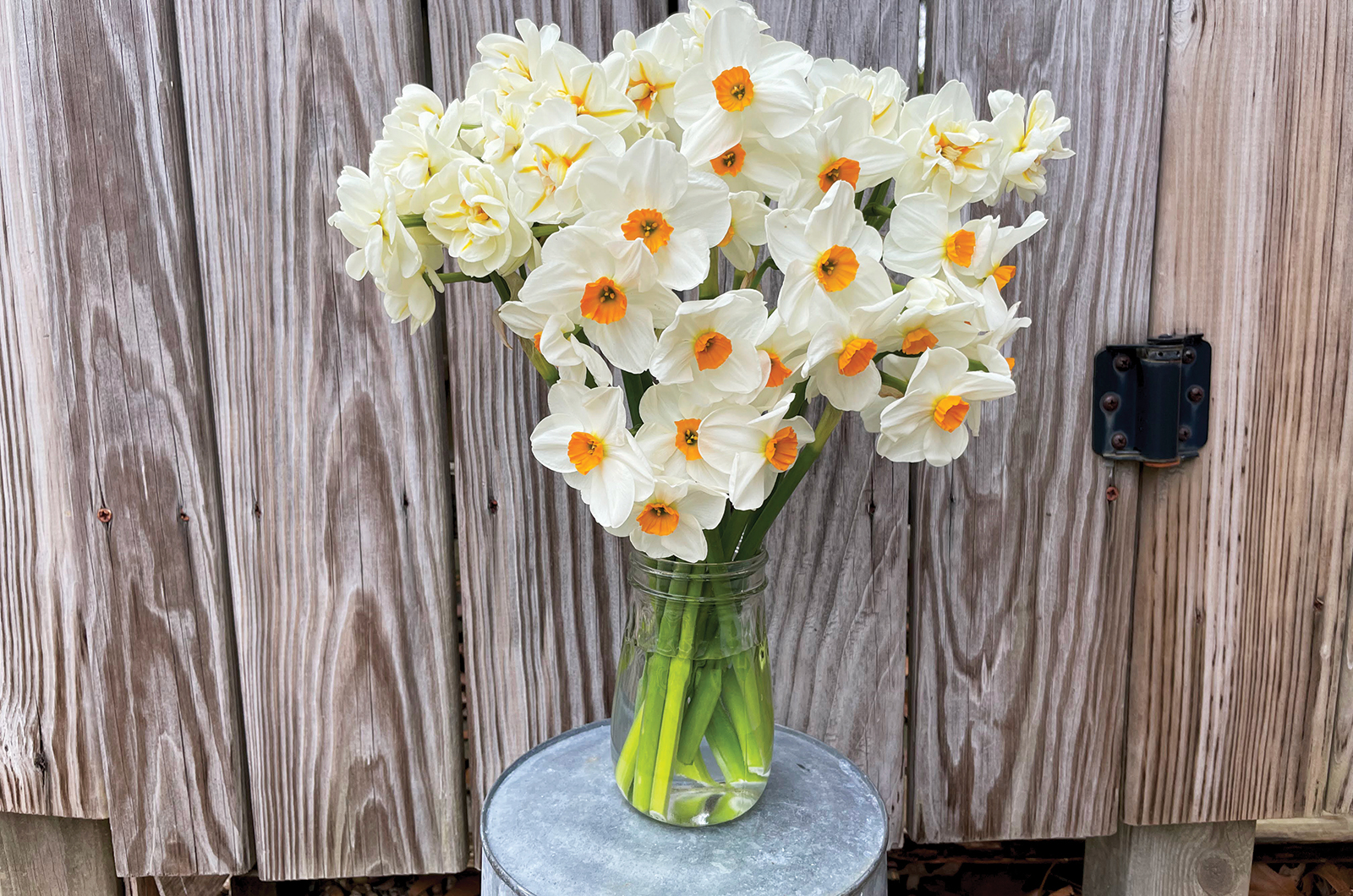






Comments